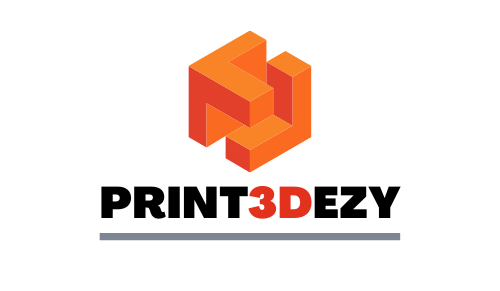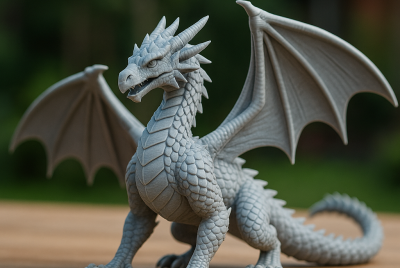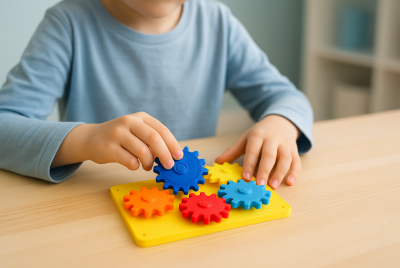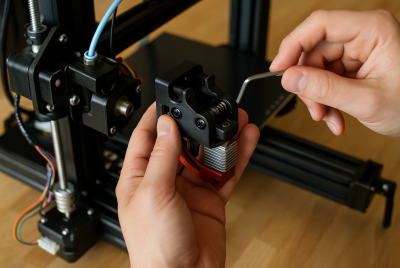Best 3D Scanner for 3D Printing in 2025
Do you ever imagine a design in your head but struggle to recreate it digitally? You’re not the only one. Many 3D printing enthusiasts run into the same challenge. Modeling from scratch takes time, effort, and skill, and even then, the results don’t always come out as expected. This is where a 3D scanner for 3D printing can change everything. With the right scanner, you can capture real-world objects with speed and accuracy, turn them into printable files, and open the door to endless creative possibilities.
What Is a 3D Scanner for 3D Printing?
A 3D scanner is a device that captures the exact geometry of an object. Unlike a camera, which only records colors and textures in two dimensions, a scanner measures depth and shape. It uses technology like structured light, lasers, or high-resolution cameras to create a digital 3D model.
That model can be exported as an STL or OBJ file, which you can edit in CAD software or send directly to your printer. For hobbyists, it means fixing a broken part or scanning collectibles. For professionals, it speeds up product design, prototyping, and reverse engineering. Either way, it’s a tool that bridges the gap between imagination and reality.
The Importance of a 3D Scanner in Printing
Think of the hours spent modeling a part manually. Every curve, every measurement has to be precise. Now imagine scanning the object in minutes and getting an editable file almost instantly. That’s the kind of time savings that makes a scanner worth the investment.
Beyond convenience, scanners also reduce errors. Manual modeling is prone to mistakes, especially for complex shapes. A scanner ensures dimensions are accurate, saving wasted filament and repeated test prints. In fact, a study on the accuracy of hand-held structured-light scanning found that modern devices deliver mean radial errors below 0.25 mm, with high repeatability and reliability across different users.
On top of that, scanners inspire creativity. You can digitize art pieces, personalize designs, or experiment with scale by resizing scanned models. Research on structured-light scan accuracy in anthropology also showed that scanners capture detailed geometry more reliably than manual measurements. For many makers, this mix of precision and creative flexibility makes a scanner just as essential as the printer itself.
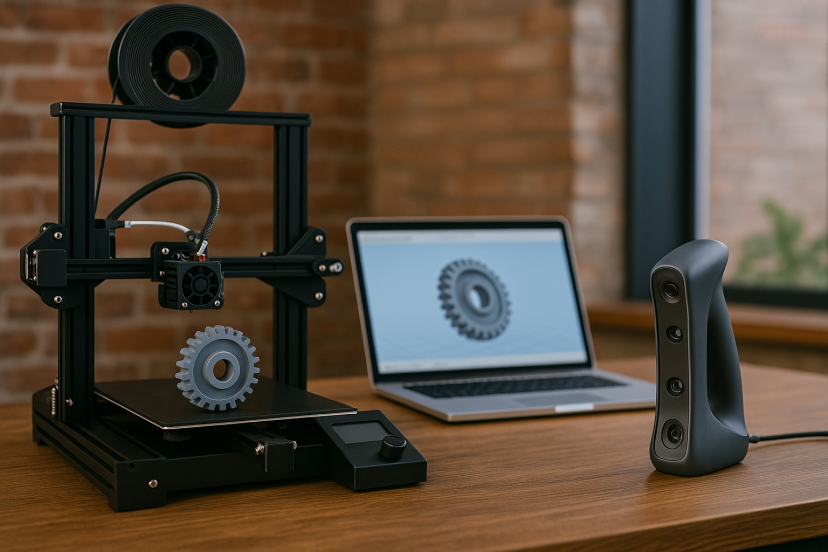
Key Features to Look for in a 3D Scanner
When shopping for a scanner, it’s easy to get lost in technical terms. To simplify things, here are the main factors you should consider:
- Accuracy and Resolution
If you want crisp details, look for scanners with accuracy around 0.1mm or better. High-resolution scanners capture textures, small engravings, and fine lines that would otherwise be missed. - Ease of Use
Beginners should look for plug-and-play devices. The less time you spend calibrating, the more time you spend creating. - Speed
Some scanners can map small objects in seconds, while others take longer but deliver higher precision. Decide which matters more for your workflow. - Software Compatibility
Make sure the scanner works with your slicing and modeling software. Having to convert files multiple times can be frustrating. - Portability
If you plan to scan large objects, a handheld scanner gives you more freedom. Desktop scanners, on the other hand, work best for small, highly detailed items.
Top 5 Recommended 3D Scanners for 3D Printing
Here are five standout models that strike the right balance between price, performance, and usability.
1. Creality CR-Scan Ferret
The Creality CR-Scan Ferret is a great entry-level choice for beginners who want to test 3D scanning without spending too much. It’s light, portable, and performs well for hobby projects.
- Affordable starter option
- Accuracy around 0.1mm
2. Revopoint POP 3
Known for its impressive precision, the Revopoint POP 3 is compact and easy to carry, making it popular among makers who need reliable results for both small and mid-sized objects.
- Delivers 0.05mm accuracy
- Versatile for different project sizes
3. Shining 3D Einstar
This scanner is ideal for artists and designers, as it captures not only shape but also detailed textures. It’s especially useful for scanning faces, sculptures, or creative projects.
- Captures geometry and textures
- Best in stable indoor lighting
4. Matter and Form 3D Scanner V2
A desktop model built for precision, the Matter and Form V2 is designed for small, detailed items. It comes with its own software and fits well in a dedicated workspace.
- Reliable desktop setup
- Precise for small objects
5. Revopoint Range
If you’re working with bigger projects, the Revopoint Range is a strong choice. It’s portable, user-friendly, and designed for scanning large objects like furniture or car parts.
- Built for large-scale scans
- Quick and easy calibration
Product Comparison Table
| Product | Accuracy | Best For | Portability | Price Range |
| Creality CR-Scan Ferret | ~0.1mm | Beginners & hobbyists | High | $ |
| Revopoint POP 3 | 0.05mm | Makers & prosumers | Very High | $$ |
| Shining 3D Einstar | 0.1mm | Textures & art projects | Medium | $$ |
| Matter and Form V2 | 0.1mm | Small precise models | Low (desktop) | $$ |
| Revopoint Range | 0.1mm | Large objects & parts | High | $$ |
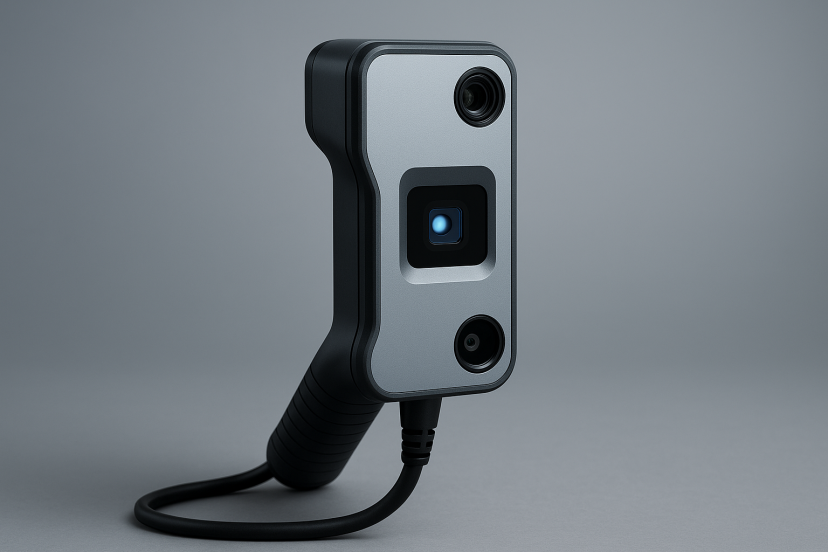
How 3D Scanners Improve Your Workflow
A scanner transforms how you work. Here’s how:
- Prototyping: Instead of drawing models from scratch, you scan and print.
- Repairing Parts: Scan broken items, replicate them, and print replacements.
- Customization: Scan an object, tweak it in CAD, and make it uniquely yours.
- Art & Design: Capture textures, sculptures, or even faces for creative projects.
Even small tasks become faster and more enjoyable. Imagine scanning a toy, resizing it, and printing it in a new scale. Or digitizing a handmade clay model and editing it for 3D printing. That’s the creative power scanners bring to the table.
Related Tools and Accessories
A scanner works best when paired with the right accessories.
- Calibration Kits: Keep accuracy consistent.
- Lighting Equipment: Bright, even light improves scanning results.
- Software Upgrades: Advanced editing software gives you more flexibility.
For inspiration, explore how 3D scanning and printing blend in projects like 3D Printed Hair Accessories. It’s a great example of how scanning real-world designs can lead to creative, practical results.
Conclusion
Investing in a 3D scanner for 3D printing isn’t just about saving time. It’s about unlocking creative freedom, boosting accuracy, and making your projects more enjoyable. Whether you’re just starting out with an affordable option like the Creality CR-Scan Ferret or stepping up to professional tools like the Revopoint POP 3, the right scanner will transform how you design and print. These scanners represent the best mix of performance and value. Choose one that matches your needs, and you’ll soon wonder how you managed without it.
FAQs
1. What is the best 3D scanner for 3D printing beginners?
The Creality CR-Scan Ferret is easy to use and budget-friendly, making it a solid beginner choice.
2. How accurate are affordable 3D scanners?
Many entry-level models achieve around 0.1mm accuracy, which is enough for most hobbyist projects.
3. Can I scan large objects with a portable 3D scanner?
Yes. Handheld models like the Revopoint Range are built specifically for larger objects.
4. Do I need special software for my 3D scanner?
Most scanners include their own software, but compatibility with CAD and slicing programs is still important.
5. What is the price range of a good 3D scanner?
Expect to pay between $200 and $800, depending on whether you want an entry-level or professional scanner.
